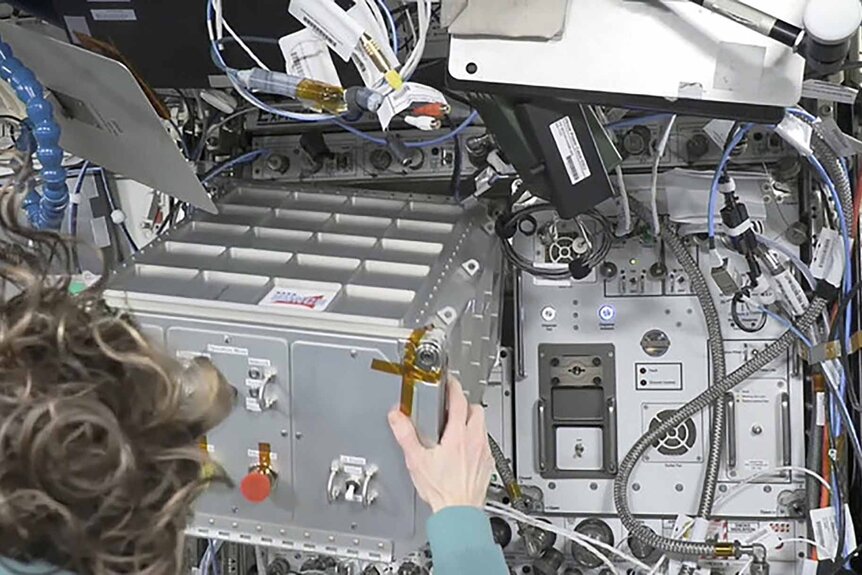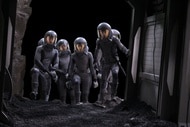Create a free profile to get unlimited access to exclusive videos, sweepstakes, and more!
With Help from a Robot, a Surgeon on Earth Performs Simulated Surgery on the ISS
In space, you can have your surgery delivered.
Every time we send an astronaut into space, we have to send them with everything they might need to survive. The list of things they’ll definitely need is relatively short: food, water, air, and shelter. But the list of things they’ll need to do anything interesting is longer, and the list of things they might need is longer still.
In SYFY’s The Ark, mission planners had to select a carefully curated crew, including medical specialists, to ensure the success of their interstellar mission. In real life, real estate aboard spaceships is limited and we can’t always send doctors and surgeons. Fortunately, in the event of a medical emergency, astronauts might be able to benefit from surgical robots remotely controlled by doctors on Earth.
Recently, surgeons on Earth performed simulated surgery using a surgical robot aboard the International Space Station (ISS). The robot is called spaceMIRA, short for Miniaturized In Vivo Robotic Assistant, and was developed by scientists at the University of Nebraska-Lincoln.
For More on Robots:
The Science Behind I, Robot: How Scientists Are Working on Isaac Asimov's Laws of Robotics
NASA Wants Humanoid Robots on Future NASA Missions
NASA Developing Robotic Eels to Explore Alien Worlds
Surgeon on Earth Controls spaceMIRA Surgical Robot on ISS
The spaceMIRA system was launched January 30, 2024, inside a microwave-shaped box aboard a Falcon 9 rocket. It was designed to use a two-handed approach to grasp and cut at the same time. “The two-handed approach is critical in surgical procedures because local tension is key to determining the ideal locations to resect and to cut in the desired way,” said Shane Farritor University of Nebraska-Lincoln professor and chief technology officer for Virtual Incision, in a statement.
A surgeon on Earth remotely controlled spaceMIRA, orbiting 250 miles overhead, to perform a simulated dissection. The robot, under the control of human operators, performed exactly as hoped and confirmed the system can successfully translate surgical motions to the robotic system. The system could be used for medical emergencies in space, but researchers are more excited about potential applications on Earth.
MIRA could be deployed in remote regions where medical infrastructure isn’t as readily available to extend care to underserved communities. A single trained surgeon with half a dozen robots scattered around could feasibly serve a wide area and a large population.
“While space travel is exciting to think about, there is also an immediate need on Earth to help patients get the care they need,” Farritor said.
Researchers did note the problem of light-speed lag. During the experiment, the lag time between motions from the surgeon and motions from the robot were between two-third and three-fourths of a second. It’s a short enough signal turnaround time to be workable in low-Earth orbit but would become increasingly problematic at farther distances.
The light distance to the Moon, for instance, is about 1.3 seconds. That means a surgeon on Earth would have to deal with a 2.6 second round-trip delay when working with a lunar astronaut. The speed of light insists that even a remote surgery happen within a reasonable distance. Which means that MIRA will probably be more useful on Earth than it will ever be in space.
“SpaceMIRA’s success at a space station orbiting 250 miles above Earth indicates how useful it can be for health care facilities on the ground,” Farritor said.
If you’re going farther than the Moon, take your doctors with you. Catch The Ark when it returns for Season 2 on SYFY.



































